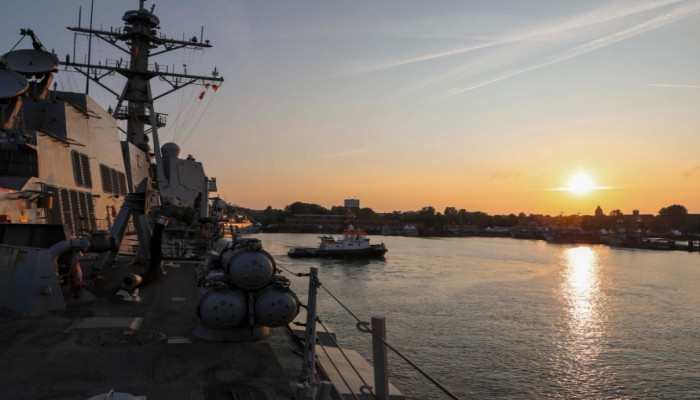NATO to commence its largest Baltic operations exercise to date
- In Reports
- 03:47 PM, Jun 06, 2024
- Myind Staff
NATO's Baltic Operations series of exercises, now in its 53rd iteration, is set to become the alliance's largest to date. This growth is attributed to the inclusion of new member states and increased security concerns regarding Russia.
Over the past week, thirty warships from 20 nations have gathered at Klaipėda in Lithuania to prepare for NATO’s principal annual naval exercise in the Baltic Sea. Scheduled to take place between June 7 and 20, the exercise will involve four amphibious task groups and multinational task units comprising more than 50 vessels, 25 aircraft, and 9,000 personnel. Participating countries include Belgium, Denmark, Estonia, Finland, France, Germany, Greece, Italy, Latvia, Lithuania, the Netherlands, Norway, Poland, Portugal, Romania, Spain, Sweden, Türkiye, the United Kingdom, and the United States, engaging in various maritime drills throughout the region.
Planned activities for the upcoming BALTOPS exercise include antisubmarine warfare, gunnery drills, amphibious operations, mine clearing, and medical responses.
Speaking to reporters in a pre-sail conference at Klaipėda, Vice Admiral Thomas Ishee, commander of the U.S. 6th Fleet and Naval Striking Support Forces NATO, emphasised that BALTOPS consistently delivers credible results in enhancing collective defence capability and strengthening the alliance's cohesion and agility.
Since its inception in 1971, the BALTOPS exercise has grown in size and complexity, reflecting NATO's expansion to include Baltic states and its response to increased threats from the east. According to a statement from the U.S. Navy, BALTOPS 2024 will witness the largest gathering of amphibious and mine-hunting forces in its history.
Speaking on the evolving nature of warfare in response to Russia's actions in Ukraine, Vice Admiral Thomas Ishee, commander of the U.S. 6th Fleet and Naval Striking Support Forces NATO, emphasised the need for adaptability in combat environments. He highlighted this as a critical focus for both his U.S. command and NATO command.
Ishee underscored Russia's continued capability as an adversary, pointing to its significant naval capabilities, including anti-access and area denial systems. The Russian Baltic Fleet, stationed in Kaliningrad, an enclave within NATO's Baltics, is equipped with numerous surface-to-air missiles and anti-ship systems, contributing to regional tensions.
Sweden, a participant in the BALTOPS exercise since the 1990s, will join as a full NATO member for the first time in the 2024 iteration. The decision to integrate into the military alliance was made in 2022 following Russia's invasion of Ukraine, reflecting heightened security concerns in the Baltic region. Despite this alignment with NATO, Sweden continues to grapple with challenges posed by Russian naval activities, including a fleet of merchant vessels reportedly equipped with surveillance capabilities.
Emphasising NATO's collective defence doctrine, Vice Admiral Thomas Ishee reiterated concerns about Russian capabilities, underscoring the alliance's commitment to protect all member states, including Finland and Sweden, which possess extensive coastlines along the Baltic Sea.
Reflecting on lessons drawn from the conflict in Ukraine, Ishee acknowledged the strategic significance of the Black Sea and its implications for NATO operations. He highlighted NATO's preparedness to address evolving threats and defend the Euro-Atlantic area, citing the deployment of new warfighting plans during BALTOPS 2024.
Additionally, this year's exercise will feature a first-time deployment of naval forces assigned by the U.S. Indo-Pacific Command, as announced in a NATO press release. Specific details regarding the assets from this combatant command were not disclosed.
Image source: USNI news







Comments